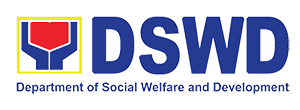 Social Welfare and Development Secretary Dinky Soliman today said that the DSWD will continue to prioritize critical areas in Central Luzon and Metro Manila for relief distribution.
Social Welfare and Development Secretary Dinky Soliman today said that the DSWD will continue to prioritize critical areas in Central Luzon and Metro Manila for relief distribution.
The Secretary also continues to call on volunteers to help in the repacking of relief goods. Volunteers may go to the DSWD-National Resource Operations Center (NROC)
As of August 8, 6 am, some P7.93 million worth of relief assistance have been provided to affected families from the combined resources of the DSWD, concerned local government units and non-government organizations.
A total of 294 evacuation centers remain open in affected regions serving 31,379 families composed of 149,050 persons. Likewise, 48,536 families with 244,424 persons are outside evacuation centers but are nonetheless provided with relief assistance.
In the National Capital Region, 16,503 families composed of 77,918 individuals were affected by continuous rains and flooding. A total of 14,225 families or 68,372 individuals are presently staying in 107 evacuation centers.
DSWD-NCR sent 800 food packs and 115 boxes of energy biscuits to four affected areas in Quezon City, particularly in Barangay Sta. Lucia, Bagong Silangan, Holy Family Church and Roxas District.
DSWD-NCR has released a total of P3,619,420 worth of assistance to nine affected LGUs in NCR. The assistance consisted of food packs, blankets and mattresses.
In Region III, a total of 208,016 families with 822,312 persons were affected by continuous rains.
To date, 59 evacuation centers remain open in Region III serving 3,358 families or 14,160 persons, while some 5,376 families or 26,384 persons were served in their respective communities.
Total amount of assistance extended to family-victims in Region III has reached P2,402,396.00 composed of family packs, rice, canned goods, mats, clothes, and blankets from the combined resources of the DSWD (P753,640.00), concerned local government units (P1,558,756.00) and non-government organizations (P90,000.00).
DSWD social workers continue to assist social workers in affected local government units along management of evacuation centers, assessment of needs of victims, relief distribution and stress debriefing. ###


